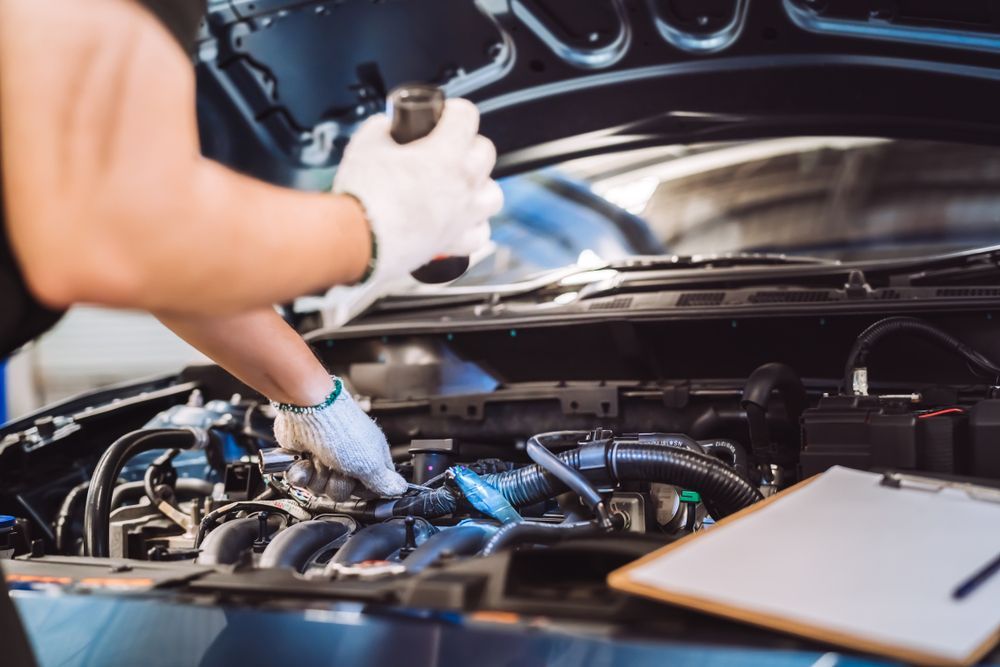Rodents in the Engine Bay: Small Pests, Big Problems
Rodents in the Engine Bay: Small Pests, Big Problems

You park your car, walk away, and think nothing of it. But while you’re inside sipping coffee or sleeping, something might be crawling under your bonnet — and it’s not just your engine ticking as it cools. Rodents, especially rats and mice, are known to take shelter in engine bays. The result? Chewed wires, nests made from insulation, and potentially thousands of dollars in damage. Here’s what you need to know.
Why Do Rodents Nest in Cars?
Engine bays offer the perfect rodent Airbnb:
- Warmth: Engines stay warm for hours after a drive, especially in colder months.
- Shelter: It's a dark, protected space away from predators.
- Nest Areas: Rats and mice will gather all sorts of loose materials to build a nest with. Combine that with a sheltered and often warm environment, they have the perfect place to expand their families.
Common Signs Rodents Have Invaded Your Engine Bay:
- Chewed Wires: One of the most common and expensive issues. Rats chew on anything — including wiring harnesses — leading to engine misfires, warning lights, or complete electrical failure.
- Strange Smells: Decomposing food, droppings, or worse — dead rodents — can cause foul odours. These are often in the hardest places to eliminate too!
- Insulation or Debris: If you pop the bonnet and see leaves, shredded fabric, droppings or paper tucked into and around your engine bay, a nest may be forming.
- Warning Lights: Chewed wires can trip your check engine light or other dashboard alerts.
Real Costs of Rodent Damage
Rodent damage can range from a few hundred dollars to thousands for electrical damage or part replacements. Some insurance policies cover it, but many do not — and even if they do, there's still your excess to consider. We have had a customer experience intermittent issues going into reverse, causing the gear selector to become damaged over time. It left us scratching our heads at first as the gearbox itself wasn’t damaged. Fast forward to when the gear issue escalated to multiple gears having issues, we then discovered a stone fruit seed sitting on top of the selector in the engine bay. Then the pin dropped, and the rodent droppings and nest materials were discovered elsewhere in the engine bay too.
Prevention Tips:
- Park in a Garage: If possible, always park in a secure, enclosed space.
- Open the Bonnet Occasionally: Rodents prefer undisturbed areas. Opening the bonnet and leaving it open to cool the engine faster, especially in Winter, can help discourage nesting.
- Use Rodent Deterrents: Using rat baits nearby can reduce the likelihood of them finding shelter in your engine bay. Just remember to also leave a water source nearby as well so they don’t go looking for water from your radiator or washer bottle. As these components are often plastic, they can be chewed which puts you back to square one. Ultrasonic devices or motion-activated lights can help.
- Check Frequently: If your car sits for more than a few days at a time, inspect the engine bay regularly. Pay particular attention to your radiator fan, as well as nooks and crannies and look for nesting materials and droppings.
- Keep Food Away: Never leave pet food, bird seed, or garbage near your car. Rats are opportunists.
What to Do If You Suspect Damage
If you notice signs of rodent activity:
- Don’t start the car until it’s inspected.
- Call your mechanic to perform a full check, including wiring and fluid lines.
- Take pictures for insurance documentation if needed.
Final Thoughts
It’s shocking how much damage a tiny creature can do — but for mechanics, it’s a common sight. If you’ve had rats in your engine bay before, don’t take chances. A little prevention goes a long way toward avoiding massive repair bills. And if you’re already seeing signs? Bring it in before that “small problem” becomes a big repair.





